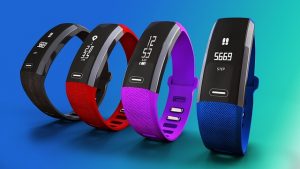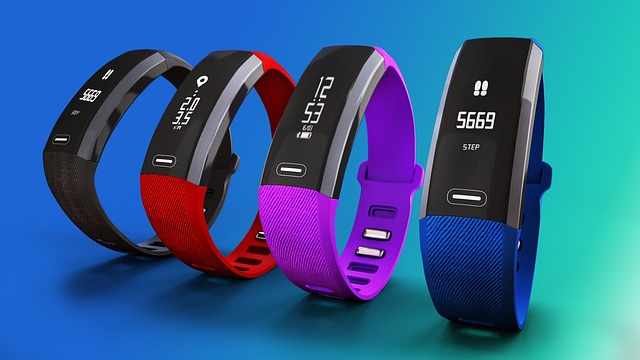Do you want to improve your health and wellness? Wearable technology can help! From fitness trackers to smartwatches, these devices are designed to monitor your daily activity levels, heart rate, sleep patterns, and more. With the right wearable health technology, you can gain insights into your body’s performance and make smarter decisions about your diet, exercise routine, and overall lifestyle.
But with all the benefits of wearable health technology come potential risks as well. Accuracy and reliability may be a concern when it comes to tracking vital signs or recommending personalized health goals. Additionally, privacy and security risks must be considered when using these devices that collect personal information.
It’s important to weigh both the pros and cons before making a decision about whether or not wearable health technology is right for you. In this article, we will explore the benefits of using wearable health technology as well as some of the potential concerns so that you can make an informed decision about incorporating this technology into your life.
Tracking Activity Levels and Vital Signs
 You can easily keep track of how much you move and monitor your heart rate with a fitness tracker or smartwatch. Real-time monitoring of your activity levels and vital signs has become an increasingly popular feature in wearable health technology.
You can easily keep track of how much you move and monitor your heart rate with a fitness tracker or smartwatch. Real-time monitoring of your activity levels and vital signs has become an increasingly popular feature in wearable health technology.
This allows you to have a better understanding of your overall health and make informed decisions about your lifestyle choices. Fitness trackers and smartwatches are equipped with sensors that can accurately record the number of steps you take, calories burned, and distance traveled throughout the day. With this information, you can set goals for yourself and strive towards achieving them.
In addition, real-time monitoring of your heart rate can help detect any irregularities in your cardiovascular system before they escalate into more serious conditions. Health behavior tracking is another benefit of using wearable health technology.
By keeping an eye on your activity levels and vital signs over time, you can identify patterns in your behavior that may be affecting your health negatively. For example, if you notice that there are certain days where you are not as active as usual or that your heart rate spikes after eating certain foods, then you may want to adjust some aspects of your daily routine to improve overall wellness.
Overall, tracking activity levels and vital signs through wearable health technology provides numerous benefits for individuals looking to improve their overall well-being. However, it’s important to note that relying too heavily on these devices also poses risks such as becoming obsessed with data or developing anxiety surrounding physical activity levels.
Ultimately, balance is key when it comes to integrating wearable health technology into one’s lifestyle.
Personalized Recommendations for Improved Health
To take full advantage of the potential of wearable health technology, it’s essential to receive personalized recommendations that are tailored to your unique health needs and goals. With these devices, you can track not only your activity levels and vital signs but also receive dietary suggestions and fitness goals that are customized specifically for you.
Here are some examples of how personalized recommendations can help improve your health:
- A wearable device can monitor your daily calorie intake and suggest healthier food options based on your nutritional needs.
- Based on your fitness level and preferences, a wearable device can recommend specific types of exercises or workouts to help you achieve your fitness goals.
- Wearable technology can track how much sleep you’re getting and provide suggestions for improving the quality and duration of your rest.
By receiving personalized recommendations from wearable health technology, you’ll be able to make more informed decisions about your overall well-being. These devices offer an opportunity for individuals to become more proactive in their healthcare by providing real-time feedback on their daily habits.
By following these recommendations, you may see improvements in several aspects of your life, including better sleep patterns, increased energy levels throughout the day, improved mental clarity, weight loss, and reduced stress.
Incorporating wearable health technology into our daily lives has many benefits. However, it’s important to remember that there are risks involved with using these devices as well. It’s crucial to consult with a healthcare professional before making any significant changes to diet or exercise routines based solely on data obtained from a wearable device.
Overall though, if used correctly in conjunction with professional advice where necessary, such devices offer great potential for improved physical wellness along with other benefits like better mental wellbeing too!
Potential Concerns with Accuracy and Reliability
It’s concerning that wearable devices may not always be accurate or reliable, potentially leading individuals to make harmful decisions about their well-being.
There have been instances where wearables provided inaccurate readings leading users to believe they were healthier than they actually were. This could lead them to ignore symptoms of underlying health conditions and delay seeking medical attention.
Similarly, if a device provides inaccurate information regarding one’s physical activity level or calorie intake, it could lead to individuals making poor choices in their diet and exercise routine.
Potential solutions exist for addressing these concerns with accuracy and reliability. For example, regulatory bodies can enforce stricter standards on wearable manufacturers to ensure devices are accurately calibrated and tested before being sold on the market.
Additionally, healthcare providers can educate patients on how to properly use wearables and interpret data from them. Ethical considerations also come into play when considering the potential harms of relying solely on technology for health-related decisions.
Ultimately, while there are risks associated with using wearable health technology, it is important to note that these devices still have the potential for positive impact when used correctly.
As long as users remain aware of the limitations of these devices and seek professional guidance when necessary, wearables can serve as a helpful tool in promoting overall wellness and preventative care measures.
Privacy and Security Risks
As more people adopt wearable devices, they may unknowingly expose their personal data to potential hackers and unauthorized third parties.
Data breaches are a serious concern with the use of wearable health technology. These devices collect sensitive information such as heart rate, sleep patterns, and physical activity levels, which can be used by cybercriminals for fraudulent activities.
In addition to data breaches, ethical considerations must also be taken into account when using wearable health technology. Wearable devices often collect personal information without obtaining explicit consent from users. This raises questions about who has access to this data and how it is being used.
As these devices become increasingly popular and advanced, it is important for companies to address privacy concerns and implement stronger security measures. To mitigate privacy and security risks associated with wearable health technology, users should take steps to protect their personal information.
This includes setting strong passwords on devices and apps, disabling unnecessary features that could potentially share sensitive information, and only sharing data with trusted sources or healthcare providers.
Companies can also play a role in protecting user privacy by implementing strict security protocols and being transparent about their data collection practices. As the use of wearable health technology continues to grow, it is crucial for both individuals and companies to prioritize privacy and security in order to fully reap the benefits of these innovative devices without compromising personal information.
Making Informed Decisions about Wearable Health Technology
Before purchasing a wearable device, have you researched its features and considered if it aligns with your personal health goals? Wearable technology has the potential to be beneficial for tracking various health metrics like heart rate and steps taken. However, it is important to take into account any potential biases in the data collected.
For example, some devices may not accurately track certain activities or may be designed with a specific population in mind. Additionally, consider the user experience – will the device be comfortable to wear and easy to use?
When making an informed decision about incorporating wearable technology into your lifestyle, it is also important to consider the privacy and security risks that come with sharing personal health information. Look for devices that have strong security measures in place and consider where your data is being stored and who has access to it.
It may also be helpful to read reviews from other users or consult with a healthcare professional before making a purchase. Ultimately, incorporating wearable technology into your lifestyle can be beneficial as long as you make an informed decision based on your personal needs and preferences.
Take the time to research different devices, consider any potential biases or privacy concerns, and think about how well the device will fit into your daily routine. By doing so, you can make sure that you are using wearable technology in a way that supports your overall health goals.
How long should I wear a wearable health device in order to get accurate readings?
To get accurate readings from your wearable health device, it’s important to wear it for the recommended length of time.
The optimal wear time can vary depending on the type of device and what data it’s collecting. For example, a fitness tracker may need to be worn continuously for 24 hours to accurately track sleep patterns, while a heart rate monitor may only need to be worn during exercise sessions.
It’s also important to ensure that the device is properly fitted and positioned according to manufacturer instructions.
By following these guidelines, you can maximize the accuracy of your wearable health technology and get the most out of its features.
Are there any health conditions that make using wearable technology unsafe?
If you have a pre-existing health condition, it’s important to be aware of the potential risks associated with using wearable technology.
Before diving in, consider taking some precautionary measures to ensure that you don’t put yourself at unnecessary risk.
For instance, if you have epilepsy or a heart condition, consult with your doctor first to determine whether wearing a device is safe for you.
Additionally, if you experience any discomfort while wearing the device or notice any unusual symptoms, stop using it immediately and seek medical attention.
Remember that although wearable health technology can provide valuable insights into your health and fitness, your safety always comes first.
Can wearable health devices be used as a substitute for medical advice or treatment?
Wearable health devices can provide valuable information about your health, but they shouldn’t be used as a substitute for medical advice or treatment.
While these devices have their limitations in terms of accuracy and effectiveness, they can still provide useful insights into your health status.
However, it’s important to remember that the responsibility and liability for making decisions about your health ultimately lies with you and your healthcare provider.
Using wearable technology should supplement, rather than replace, professional medical advice and treatment.
How can I ensure the privacy and security of my personal health data collected by wearable technology?
To ensure the privacy and security of your personal health data collected by wearable technology, it’s important to take certain measures.
Firstly, make sure that the device you’re using has data encryption capabilities, which will protect your information from being accessed by unauthorized individuals.
Additionally, be cautious about giving third-party access to any of your health information. Only grant access to trusted and verified sources. This way, you can maintain control over who sees your data and how it is used.
Finally, regularly check for software updates on your wearable device as these often contain necessary security patches to keep your data safe and secure.
What steps can I take to properly dispose of a wearable health device once I no longer need it?
So, you’ve finally decided to let go of your trusty wearable health device. Congratulations!
Now, it’s time to think about the eco-friendly disposal of this piece of technology.
The first step is to check if the manufacturer offers a recycling program or provides instructions on how to dispose of the device properly.
If not, you can check with local e-waste recycling facilities near you for options on how to recycle electronic devices safely and responsibly.
Remember that these devices contain hazardous materials that can harm the environment if not disposed of correctly, so taking these steps ensures not only an eco-friendly disposal but also a safer one.
Congratulations! You’ve learned about the benefits and risks of using wearable health technology. By tracking your activity levels and vital signs, you can gain insight into your overall health and make personalized recommendations for improvement. These devices have the potential to revolutionize healthcare by providing patients with real-time data that can inform treatment decisions.
However, it’s important to consider potential concerns with accuracy and reliability as well as privacy and security risks. Remember the adage ‘trust but verify’ when evaluating wearable health technology. Do your research before investing in a device, choose reputable manufacturers, and always read user reviews to ensure you’re getting a reliable product.
In conclusion, wearable health technology has both its advantages and disadvantages. It’s up to you to weigh the benefits against the risks before deciding whether or not to incorporate this technology into your healthcare routine.
With careful consideration, you can make informed decisions that will help improve your overall health and well-being.









